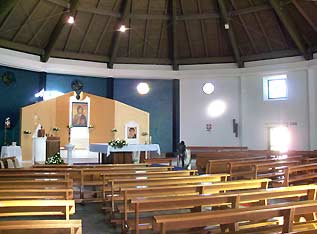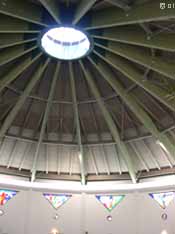 «In the testament of father Matteo Uccellatore of 22 September 1720 and in the deed of Giovanni Mancani it is written that about fifty steps further from the church of St Nicola di Bari, placed downhill, in the St Nicola area, called once Zenia and corresponding now to Piano della Sena, there existed another church dedicated to the same Saint, which was buried by the lava of 1651 together with the St Antonino and St Pietro dell’Illichito churches. «In the testament of father Matteo Uccellatore of 22 September 1720 and in the deed of Giovanni Mancani it is written that about fifty steps further from the church of St Nicola di Bari, placed downhill, in the St Nicola area, called once Zenia and corresponding now to Piano della Sena, there existed another church dedicated to the same Saint, which was buried by the lava of 1651 together with the St Antonino and St Pietro dell’Illichito churches.
Of this small church there is no mention in the 1574 pastoral visit or in the reveals. The district Zenia contained many vineyards and apple orchards, irrigated by perennial waters now disappeared. It was therefore the lava of 1651 that buried the old church of St Antonino and St Pietro, as later wrote the Musumeci about the 1832 eruption, and not the 1536 eruption as written by father De Luca in his Bronte’s History.  In the 1536 eruption possibly was buried the Purgatory church, whose site is not known. The lava flow of 1651 spread from SS. Cristo to Brigolo and down to St Nicola until Ponte Sciara. In the 1536 eruption possibly was buried the Purgatory church, whose site is not known. The lava flow of 1651 spread from SS. Cristo to Brigolo and down to St Nicola until Ponte Sciara.
This eruption scared so much the Bronte’s people that they decided to emigrate; but the Hospital rectors, fearing the land depopulation, tried to stop them by offering the feud of Gollia, which was not accepted.
In October of 1814 the jury and the Parish of Bronte asked for the erection of a new church in the district Sciarone, transferring in it the cult and the annuities of the St Nicola’s church. This desire was ratified by the King with a dispatch of the 12th October 1814 that advised the Mons Archbishop of Messina. The craved for and conceded transfer however was not carried out and the Sciarone was left without a church. The St Nicola statue is made of wood and caries this inscription: Ex charitate fidelium et ex industria Mr. Marii Messina anno 1793. The small bell is of 1722.» (Benedetto Radice, Historical Memories of Bronte. Bronte 1926)
|